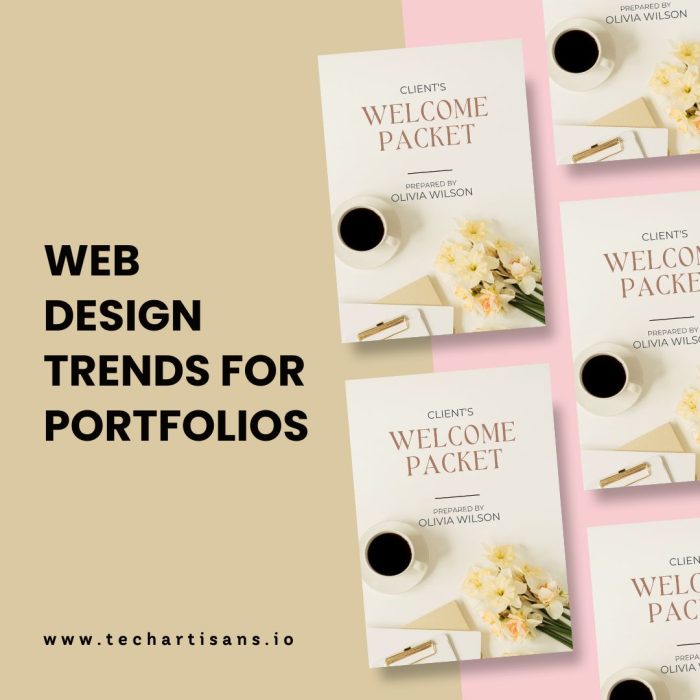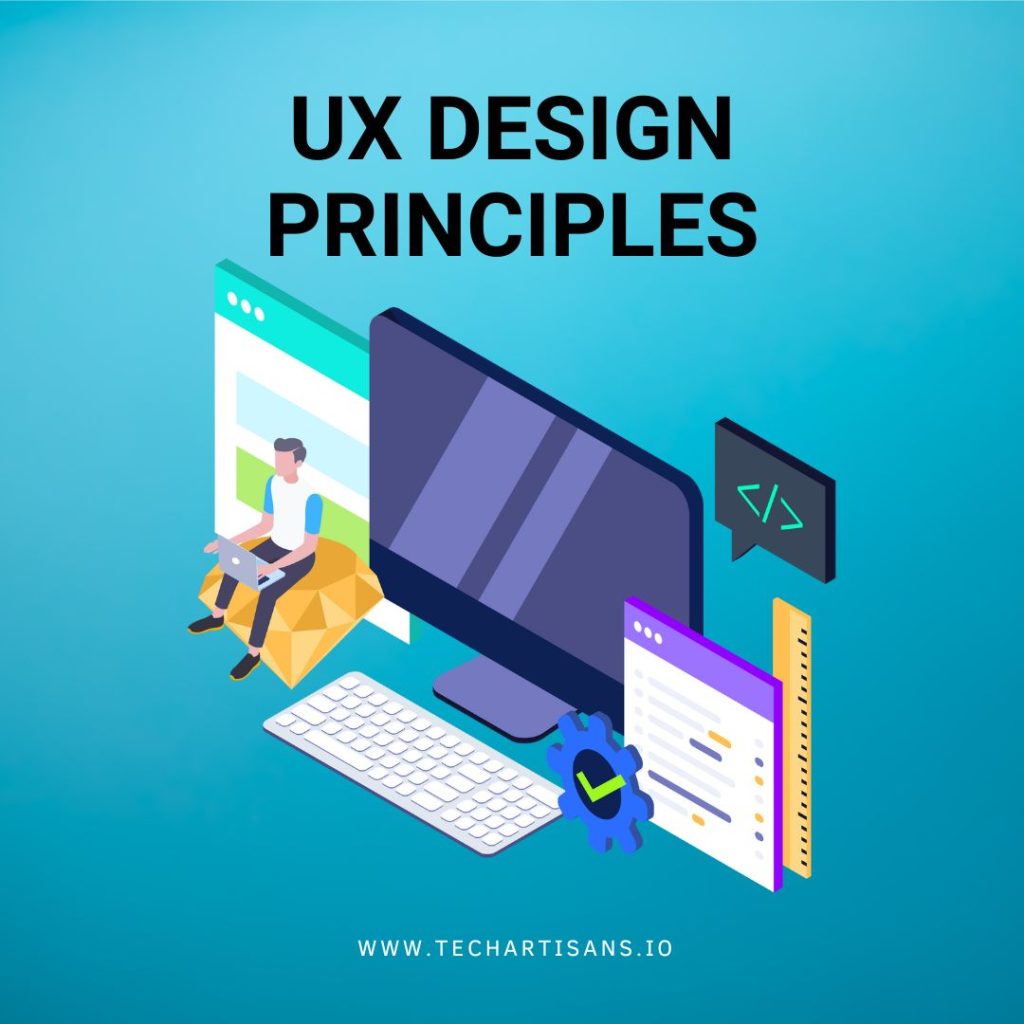In this ever-evolving digital landscape, keeping abreast of the latest web design trends for portfolios is necessary and a strategic move for business owners. Small and medium businesses should use trendy, well-designed portfolios to stand out in a crowded market and express their unique vision. These portfolios should provide a great user experience and enhance their online presence. In this article, I will highlight the latest website design trends that will shape the future of your business’s online portfolio.
The Rise of Micro-Animations
Micro-animations are emerging as a pivotal web design trend for portfolios, enhancing user interaction and providing a dynamic, engaging digital experience. Learn more about how micro-animations can be effectively used in web design from our detailed guide on User Experience and SEO. Let’s explore this trend and how it can revolutionize your online portfolio.
1. Micro-Animations and User Engagement
Micro-animations are tiny, subtle, and strategic animations that guide users, enrich interactions, and contribute to a site’s overall user experience. They are essential in making your portfolio website more engaging and interactive, effectively holding visitors’ attention.
2. Real-world Examples
Take graphic designer Tobias Sahlin’s portfolio as an example; he uses micro-animations to showcase his skills. Hovering over a project and a subtle animation gives visitors a sneak peek and piques their interest. UX designer Melanie Daveid also makes great use of micro-animations. A small animated preview appears when you hover over a project in her portfolio, creating an interactive and engaging experience. These cases illustrate how micro-animations can enhance portfolio websites.
Illustrations as Hero Images
As hero images, they are rapidly becoming a popular web design trend, transforming portfolio websites with a distinctive, artistic flair that adds a unique personality to your brand.
1. Shift From Photographs to Illustrations
In recent years, portfolio design has shifted from traditional photos to illustrations, adding artistic flair and personality. For further insights into this trend, check out our article on The Most Important Web Design Trends to Know.
Illustrations go beyond aesthetics, telling a captivating brand story and being highly adaptable to match a brand’s style. This trend, especially in hero images, shows a growing love for artistic expression in web design, resulting in a more immersive and personal user experience.
2. Benefits
Using vector-based illustrations speeds up your website’s loading, enhancing user experience in an era of instant expectations. Faster loading means smoother interaction for potential clients. These custom illustrations convey your brand’s personality and story, setting you apart from generic designs and making a lasting impression on visitors.
Unique Scrolling Experiences
Diverging from traditional scrolling norms, unique experiences are becoming a significant web design trend, offering a novel, engaging way for visitors to navigate your online portfolio.
1. Vertical vs. Horizontal Scrolling
Vertical scrolling, the usual way of moving through web pages, is common and intuitive. But it can become monotonous, especially for captivating portfolio sites. On the other hand, horizontal scrolling offers a fresh and intriguing alternative. Understand more about these choices in our comprehensive discussion on Responsive Web Design Best Practices with content moving sideways as users scroll, making for an engaging experience.
2. Enhancing User Experience with Unconventional Scrolling
Unconventional scrolling, like horizontal or parallax, elevates the user experience, making it dynamic and interactive. It transforms a standard scroll into an engaging journey, breaking the monotony and grabbing users’ attention, making your portfolio memorable. It also helps tell your work’s story, guiding users in a structured, story-like manner. This unique storytelling approach sets your portfolio apart and leaves a lasting impression that could lead to business opportunities.
Abstract and Organic Shapes
In a creative departure from conventional geometrics, abstract and organic shapes are emerging as one of the leading web design trends, injecting a unique and modern aesthetic into portfolio websites.
Transitioning to Fluid, Natural Designs
Geometric shapes have been the norm in web design, but now, a trend toward natural, irregular designs inspired by nature is emerging. Dive deeper into this trend in our article on Why Progressive Web Apps are Important.
These fluid, abstract shapes with flowing lines bring dynamism and creativity to portfolios, breaking the predictability of geometric designs. This shift adds a modern and unique touch, capturing attention and setting your brand apart in the competitive digital landscape.
Video Integration in Web Design
Integrating video content into web design is a progressive trend catalyzing a remarkable evolution in portfolio presentations, offering a multi-sensory experience that elevates user engagement.
1. Power of Storytelling Through Videos
Videos are a powerful way to grab and keep user attention, offering an immersive experience with visuals, sound, and motion. Learn how to effectively use videos on your website from our post about the Top Benefits of Using Videos on your Website.
They simplify conveying complex concepts or showcasing products, aiding potential clients in decision-making. For portfolio websites, video integration provides insights into your work, team, and case studies, building a stronger connection with your audience and adding a dynamic layer of engagement.
2. Optimizing Videos Without Affecting Load Times
You can add videos to your portfolio without slowing down your site. First, host videos on platforms like YouTube or Vimeo for smoother playback. Second, use video thumbnails that users can click to watch, saving bandwidth. Finally, optimize your videos by compressing them, using the right format, and considering a Content Delivery Network (CDN) for faster delivery.
Voice Search Optimization and Accessibility
Embracing the future of digital interactions, Voice Search Optimization and Accessibility have emerged as pivotal web design trends, transforming the way users interact with portfolio websites and enhancing their accessibility for all users.
1. Rise of Voice-activated Interfaces
Voice-activated interfaces, or VUIs, are a popular web design trend that enables hands-free browsing via voice commands. For more information on optimizing for VUIs, read our guide on How to Make Your Website Accessible. With the rise of voice assistants like Google Assistant and Siri, VUIs are rising.
They enhance website accessibility for all users, including those with physical disabilities, and voice search optimization makes finding information easier. This trend represents a move towards a more inclusive and interactive digital landscape.
2. Importance of Web Accessibility
Web accessibility ensures that everyone can access and interact with online content regardless of physical abilities. Following accessibility standards makes portfolio websites universally usable, promoting inclusivity and improving user experience, which can lead to more business opportunities. It also helps you comply with legal requirements, reducing the risk of accessibility-related legal issues.
Gradient Elements in Design
Gradients have made a powerful resurgence in modern web design trends, infusing depth, energy, and vivacity into portfolio websites, thereby captivating visitors with their visually stunning appeal.
1. Historical Context and Resurgence of Gradients
Once a digital design classic, gradients lost favor with flat design but are now back in the spotlight. Explore the creative use of gradients in our piece on The Benefits of Having an Accessible Website Playing a vital role in Modern Portfolio Web Design.
Their return is due to their ability to add depth and enhance aesthetics. Gradients are now used for more than just backgrounds; they are applied to text, icons, and illustrations, infusing vibrancy and dynamism into the user experience and making portfolio sites more engaging and memorable.
2. Brands Like Stripe Leveraging Gradients
Renowned brands like Stripe have embraced gradients in web design. Stripe’s website uses vibrant gradients to add depth and direct the user’s focus, extending to illustrations and graphics for a dynamic, fluid feel. This modern look makes Stripe’s portfolio website stand out, enhancing user engagement and showcasing the power of web design trends in brand presentation.
Supersized Titles and Headers
In portfolio web design trends, supersized titles and headers have ascended to prominence, serving as bold statements that grab attention and instantly communicate your brand’s core message.
1. Need For Immediate User Attention
In the fast-paced digital world, grabbing user attention is vital. Supersized titles and headers make bold, concise statements, instantly conveying your brand’s message. Understand their impact in our blog on Web Design Trends for Landing Pages hooking visitors, and encouraging them to explore your portfolio. They are a key tool in web design trends for effective portfolio presentation and brand communication.
2. Pairing With Sub-text For Context
Combining supersized titles with sub-text is a smart strategy in portfolio web design. Sub-text adds context and explanation, creating an information hierarchy that guides the user’s attention from the main message (title) to additional details. This improves user understanding and enhances website readability, making it a valuable approach for portfolio design.
Modern Minimalism
Modern minimalism has emerged as one of the most influential web design trends, transforming portfolio websites into clean, uncluttered digital spaces that prioritize functionality without compromising aesthetic appeal.
1. Timeless Appeal of Minimalistic Design
The minimalistic design follows the ‘less is more’ principle, emphasizing essentials and removing the unnecessary. Find more about this in our article on The Most Common Web Accessibility Issues. It creates a clutter-free environment that enhances user focus on key elements. The clean and crisp visuals of minimalism convey professionalism and sophistication, making it a timeless choice for portfolio web design trends.
2. Examples of Colorful Minimalism in Action
Colorful minimalism balances simplicity and vibrancy, as seen in Apple’s iOS 14 and UX Designer Melanie Daveid’s portfolio website. It keeps the user engaged by using vibrant colors in a clean layout with a muted palette. This shows how colorful minimalism can be effectively applied in portfolio web design.
Creative Use of Color
In web design trends, the creative use of color holds immense potential in crafting visually striking portfolio websites, setting the tone for user experience and significantly influencing brand perception.
1. Psychology Behind Color Choices
Colors have a powerful impact on emotions and perceptions, influencing how viewers feel about a brand. Read our detailed guide on The Psychology Behind Color Choices for more insights. Red signifies passion, blue conveys trust, and green evokes nature.
In website design trends, using color strategically can provoke emotions, direct attention, and improve the user experience. Understanding the psychology of colors helps designers create engaging portfolio designs, underlining the importance of color in web design trends.
2. Choosing a Palette for Brand Identity
When picking colors for your portfolio, start with your brand identity. Are you fun or professional? Match your palette to this persona for a cohesive look. Consider your audience’s preferences, as different demographics react to colors differently. While trends can inspire, your color scheme should be timeless and reflect your brand identity rather than following fleeting trends.
Conclusion
In the ever-changing field of web design, staying up-to-date with the latest trends is vital, especially for small to medium business owners. The outlined web design trends, from supersized titles to the creative use of color, can significantly elevate the appeal and effectiveness of your portfolio website. Embracing these trends elevates user experience and conveys your brand’s essence effectively. Experiment to find your unique mix, as every business is unique. Blend these trends to create a portfolio that truly represents your brand. Your portfolio website is your digital calling card, so stay current with website design trends to make it count.







